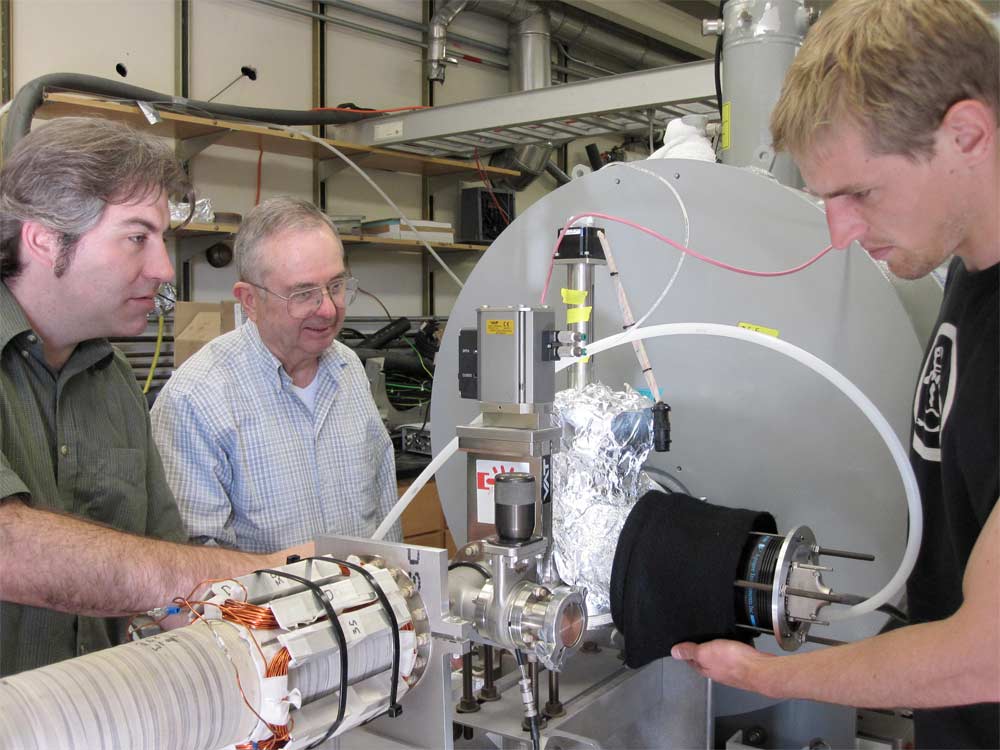Scientists Building Largest Antimatter Trap Ever

WASHINGTON, D.C. – Creating matter's strange cousin antimatter is tricky, but holding onto it is even trickier. Now scientists are working on a new device that may be able to trap antimatter long enough to study it.
Antimatter is like a mirror image of matter. For every matter particle (say an electron, for example), a matching antimatter particle is thought to exist (in this case, a positron) with the same mass, but an opposite charge.
The problem is that whenever antimatter comes into contact with regular matter, the two annihilate. So any container or bottle made of matter that attempts to capture antimatter inside would be instantly destroyed, along with the precious antimatter sample one tried to put inside the bottle.
Physicist Clifford Surko of the University of California, San Diego is hard at work to overcome that issue. He and his colleagues are building what they call the world's largest trap for low-energy positrons – a device they say will be able to store more than a trillion antimatter particles at once.
The key is using magnetic and electric fields, instead of matter, to construct the walls of an antimatter "bottle."
"We are now working to accumulate trillions of positrons or more in a novel 'multicell' trap – an array of magnetic bottles akin to a hotel with many rooms, with each room containing tens of billions of antiparticles," Surko said in a statement.
Surko presented his work today (Feb. 18) here at the annual meeting of the American Association for the Advancement of Science.
Sign up for the Live Science daily newsletter now
Get the world’s most fascinating discoveries delivered straight to your inbox.
The researchers are also developing methods to cool antiparticles to super-cold temperatures so that the particles' movements are slowed and they can be studied.
The scientists also want to compress large clouds of antiparticles into high-density clumps that can be tailored for practical applications.
"One can then carefully push them out of the bottle in a thin stream, a beam, much like squeezing a tube of toothpaste," Surko said. "These beams provide new ways to study how antiparticles interact or react with ordinary matter. They are very useful, for example, in understanding the properties of material surfaces."
Surko said another project is to create a portable antimatter bottle that could be taken out of the lab and into various industrial and medical situations. "If you could have a portable trap it would greatly amplify the uses and applications of antimatter in our world."
Antimatter may sound exotic, but it's already used in everyday technology, such as medical PET (Positron Emission Tomography) scanners.
During a PET scan, the patient is injected with radioactive tracer molecules that emit positrons when they decay. These positrons then come into contact with electrons in the body, and the two annihilate, releasing two gamma-ray photons. The gamma-ray photons are then detected by the scanner, giving a 3-D image of what's going on inside the body.
You can follow LiveScience senior writer Clara Moskowitz on Twitter @ClaraMoskowitz.











